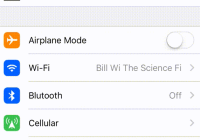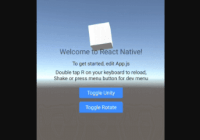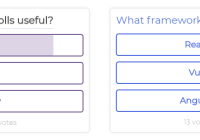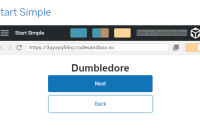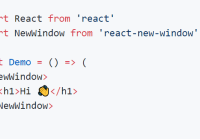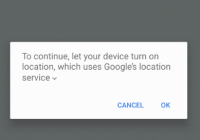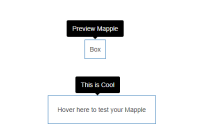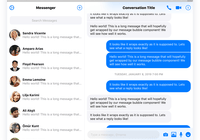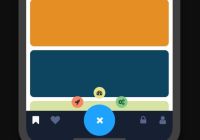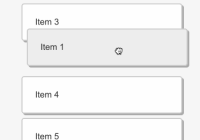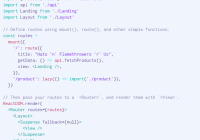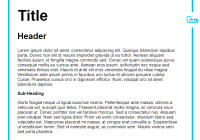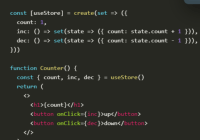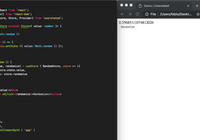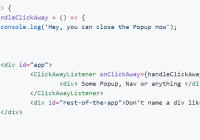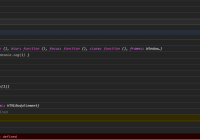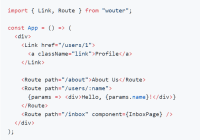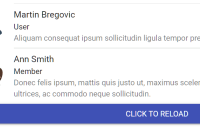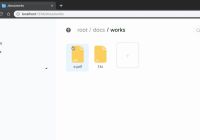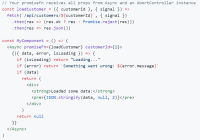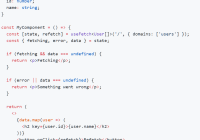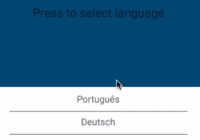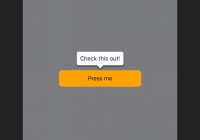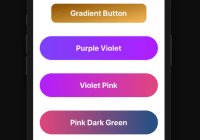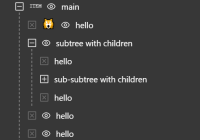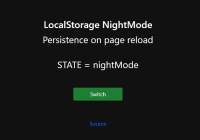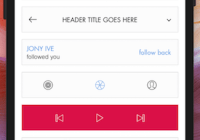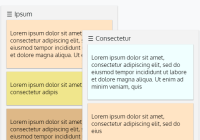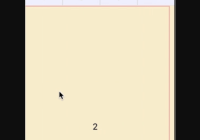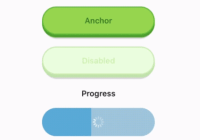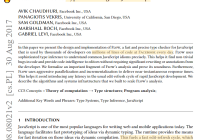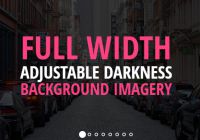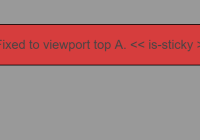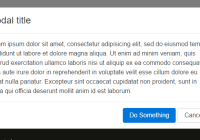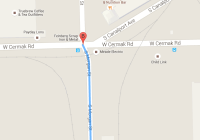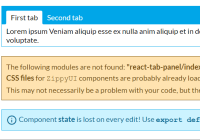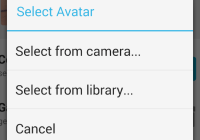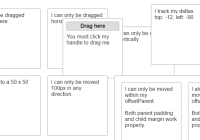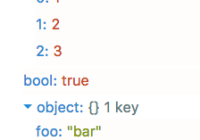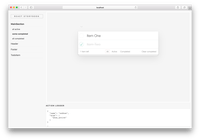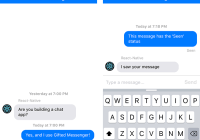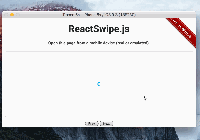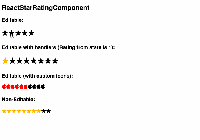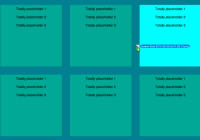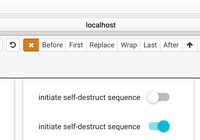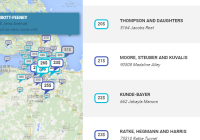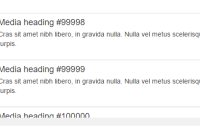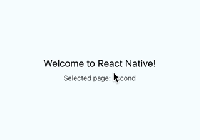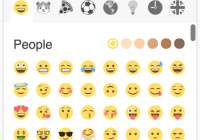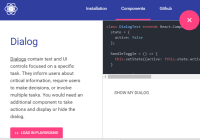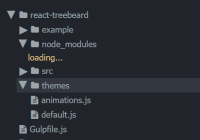react-native-settings-list
A clean and highly customizable React Native implementation of a list of settings for a settings page.
Quick Access
Installation
Install the module with:
npm install react-native-settings-list --save Usage
In your code, simply require/import the module:
import SettingsList from 'react-native-settings-list'; Top
New changes/additions
- Ability for an authorization-type component [example updated to show a practical use]
- Allows for complete customization of the TextInput by passing into the two props authPropsUser and authPassPW (overwrites defaults
- Uses existing onPress prop for callback
- Preview:
-

- Ability for custom arrow image/component
- Simply use the new arrowIcon prop to inject any type of object as the new arrow (with proper style formatting)
- Added defaultTitleStyle prop to <SettingsList> to set the style of the tiles for all children removing the need for duplicate code
Top
Contributing
Feel free to do pull requests if a certain feature you want is missing. I accept all PR's that are enhancements to the project.
Top
Prop values
<SettingsList>
The following props are used:
| Name | Description | Type |
|---|---|---|
| backgroundColor | Sets default background color for all children | React.PropTypes.string |
| borderColor | Sets default border color for all children | React.PropTypes.string |
| defaultItemSize | Sets default width for all children | React.PropTypes.number |
| underlayColor | Sets default underlayColor for all children | React.PropTypes.string |
| defaultTitleStyle | Sets default style for all children's titles | React.PropTypes.string |
<SettingsList.Header>
The following props are used:
| Name | Description | Type |
|---|---|---|
| headerText | Text for the header | React.PropTypes.string |
| headerStyle | Sets border color for the settings list | Text.propTypes.style |
| headerRef | Sets a ref on the header component | React.PropTypes.func |
<SettingsList.Item>
The following props are used:
| Name | Description | Type |
|---|---|---|
| title | Text for the item | React.PropTypes.string |
| titleStyle | Text Style | Text.propTypes.style |
| icon | A component for the icon. Doesn't need to be an image | React.PropTypes.node |
| itemWidth | Changes the individual item's width. Overwrites <SettingsLists> defaultItemSize | React.PropTypes.number |
| backgroundColor | Changes the individual item's background color. Overwrites default <SettingsList> backgroundColor | React.PropTypes.string |
| underlayColor | Changes the individual item's underlayColor color. Overwrites default <SettingsList> underlayColor | React.PropTypes.string |
| onPress | On press Callback for item [used for auth callback as well] | React.PropTypes.func |
| hasNavArrow | Displays a navigation arrow | React.PropTypes.bool |
| arrowStyle | Style for the navigation arrow | Image.propTypes.style |
| arrowIcon | Inject custom arrow into the end of the item | React.PropTypes.node |
| hasSwitch | Enable a switch component | React.PropTypes.bool |
| switchProps | RN switch props | React.PropTypes.object |
| switchOnValueChange | On switches value change callback | React.PropTypes.func |
| titleInfo | Right side title information string | React.PropTypes.string |
| titleInfoStyle | Style for title information string | Text.propTypes.style |
| isAuth | Sets item as an authorization item | React.PropTypes.bool |
| authPropsUser | Changes the props for the first TextInput component; overwrites default | React.PropTypes.node |
| authPropsPW | Changes the props for the second TextInput component; overwrites default | React.PropTypes.node |
| itemRef | Sets a ref on the TouchableHighlight that SettingsList.Item renders to | React.PropTypes.func |
Top
Simple Example
Here is a simple example of the different things you can do with the module:
The code behind it:
constructor(){ super(); this.onValueChange = this.onValueChange.bind(this); this.state = {switchValue: false}; } render() { return ( <View style={{backgroundColor:'gray',flex:1}}> <View style={{flex:1, marginTop:50}}> <SettingsList> <SettingsList.Header headerText='First Grouping' headerStyle={{color:'white'}}/> <SettingsList.Item icon={ <View style={{height:30,marginLeft:10,alignSelf:'center'}}> <Image style={{alignSelf:'center',height:40, width:40}} source={require('./about.png')}/> </View> } itemWidth={50} title='Icon Example' onPress={() => Alert.alert('Icon Example Pressed')} /> <SettingsList.Item hasNavArrow={false} switchState={this.state.switchValue} switchOnValueChange={this.onValueChange} hasSwitch={true} title='Switch Example'/> <SettingsList.Item title='Different Colors Example' backgroundColor='#D1D1D1' titleStyle={{color:'blue'}} arrowStyle={{tintColor:'blue'}} onPress={() => Alert.alert('Different Colors Example Pressed')}/> <SettingsList.Header headerText='Different Grouping' headerStyle={{color:'white', marginTop:50}}/> <SettingsList.Item titleInfo='Some Information' hasNavArrow={false} title='Information Example'/> <SettingsList.Item title='Settings 1'/> <SettingsList.Item title='Settings 2'/> </SettingsList> </View> </View> ); } onValueChange(value){ this.setState({switchValue: value}); } Top
A more realistic example
Here is an example that looks very very close to the default iPhone settings page.
The code behind this is:
constructor(){ super(); this.onValueChange = this.onValueChange.bind(this); this.state = {switchValue: false}; } render() { var bgColor = '#DCE3F4'; return ( <View style={{backgroundColor:'#EFEFF4',flex:1}}> <View style={{borderBottomWidth:1, backgroundColor:'#f7f7f8',borderColor:'#c8c7cc'}}> <Text style={{alignSelf:'center',marginTop:30,marginBottom:10,fontWeight:'bold',fontSize:16}}>Settings</Text> </View> <View style={{backgroundColor:'#EFEFF4',flex:1}}> <SettingsList borderColor='#c8c7cc' defaultItemSize={50}> <SettingsList.Header headerStyle={{marginTop:15}}/> <SettingsList.Item icon={ <Image style={styles.imageStyle} source={require('./images/airplane.png')}/> } hasSwitch={true} switchState={this.state.switchValue} switchOnValueChange={this.onValueChange} hasNavArrow={false} title='Airplane Mode' /> <SettingsList.Item icon={<Image style={styles.imageStyle} source={require('./images/wifi.png')}/>} title='Wi-Fi' titleInfo='Bill Wi The Science Fi' titleInfoStyle={styles.titleInfoStyle} onPress={() => Alert.alert('Route to Wifi Page')} /> <SettingsList.Item icon={<Image style={styles.imageStyle} source={require('./images/blutooth.png')}/>} title='Blutooth' titleInfo='Off' titleInfoStyle={styles.titleInfoStyle} onPress={() => Alert.alert('Route to Blutooth Page')} /> <SettingsList.Item icon={<Image style={styles.imageStyle} source={require('./images/cellular.png')}/>} title='Cellular' onPress={() => Alert.alert('Route To Cellular Page')} /> <SettingsList.Item icon={<Image style={styles.imageStyle} source={require('./images/hotspot.png')}/>} title='Personal Hotspot' titleInfo='Off' titleInfoStyle={styles.titleInfoStyle} onPress={() => Alert.alert('Route To Hotspot Page')} /> <SettingsList.Header headerStyle={{marginTop:15}}/> <SettingsList.Item icon={<Image style={styles.imageStyle} source={require('./images/notifications.png')}/>} title='Notifications' onPress={() => Alert.alert('Route To Notifications Page')} /> <SettingsList.Item icon={<Image style={styles.imageStyle} source={require('./images/control.png')}/>} title='Control Center' onPress={() => Alert.alert('Route To Control Center Page')} /> <SettingsList.Item icon={<Image style={styles.imageStyle} source={require('./images/dnd.png')}/>} title='Do Not Disturb' onPress={() => Alert.alert('Route To Do Not Disturb Page')} /> <SettingsList.Header headerStyle={{marginTop:15}}/> <SettingsList.Item icon={<Image style={styles.imageStyle} source={require('./images/general.png')}/>} title='General' onPress={() => Alert.alert('Route To General Page')} /> <SettingsList.Item icon={<Image style={styles.imageStyle} source={require('./images/display.png')}/>} title='Display & Brightness' onPress={() => Alert.alert('Route To Display Page')} /> </SettingsList> </View> </View> ); } onValueChange(value){ this.setState({switchValue: value}); } Here is an example of the android page:
The code can be found here
